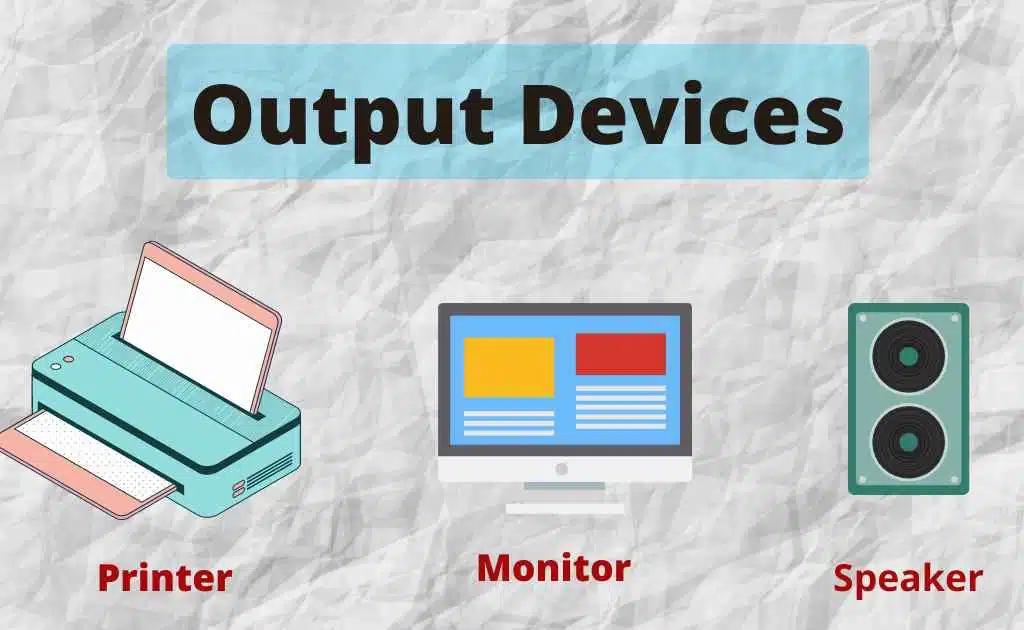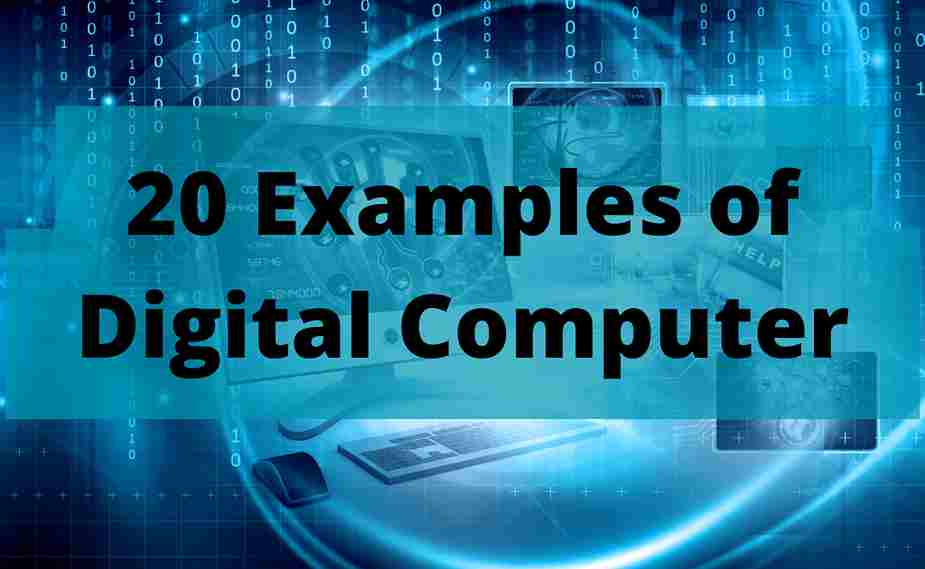Types of output devices
What is an Output Device?
Output devices are hardware components that transmit processed data from a computer to another device or a user.
The processed data given to the user is known as the output. The computer gives us output as a result of any input.
The definition of output devices is that they are hardware components that take information from a computer and present it in a way we can see, hear, or feel. These devices let computers communicate with us by converting digital data into something we can understand.
For example, when you type on a keyboard (an input device), the computer processes the information and displays it on the monitor (an output device). This shows how input and output devices work together, with the CPU in between to process the data.

Why Do We Need Output Devices?
Output devices are important because they allow computers to share results with us. Without them, we wouldn’t be able to see pictures, hear music, or print documents. These devices also make computers useful for learning, creating, and having fun.
Types of Output Devices
There are many types of output devices in a computer. They are grouped based on what they do and how they work. These include hardware output devices like audio, visual, tactile, physical, and communication devices. Here are the types of output devices by focusing on output devices:
1. Audio Output Devices
Audio devices are an important category within the types of output devices, as they convert digital signals into sounds we can hear.
- Audio Amplifiers: These devices increase sound volume and clarity, often used with speaker systems for louder environments.
- Speakers: These are the most common types of audio/voice output devices, converting electrical signals into sound waves for music, video calls, and other multimedia.
- Headphones/Earphones: Personal audio devices used for private listening, ideal for gaming, studying, or meetings.
2. Visual Output Devices
Visual devices display information in the form of text, images, or videos, making them critical in output device classification.
- Plotters: Unlike regular printers, plotters draw detailed diagrams and engineering designs, making them ideal for architects and engineers.
- Monitors: Monitors, such as LED and LCD screens, are essential types of devices in computers for displaying visual output. They are used for a wide range of tasks, including graphic design, gaming, and work.
- Projectors: These devices enlarge computer screen output onto walls or screens, commonly used for presentations and educational purposes.
- Printers: A key component of hard copy output devices, printers create physical copies of digital content.
Computer Printer Classification
- Inkjet Printers: Deliver vibrant, high-quality color prints, suitable for home or small office use.
- Laser Printers: Known for their speed and efficiency, they are ideal for producing black-and-white documents in bulk.
- Thermal Printers: Often used in supermarkets and retail, these printers produce receipts.
3. Sensation Output Devices
Sensation Output Devices are the sensation devices that work with the sense of touch and tactile experiences. These types of devices provide physical feedback and enhance user interaction.
- Tactile Screens: Offer physical sensations during touch, improving the user experience in various applications.
- Haptic Feedback Devices: Widely used in gaming controllers and smartphones, these devices simulate real-world vibrations and actions.
- Braille Embossers: Designed for visually impaired users, these devices produce raised Braille text for reading.
4. Physical Output Devices
In Physical Output Devices, we transform digital instructions into tangible objects through Physical Output Devices. Physical devices create tangible objects from digital inputs, a vital aspect of different types of input and output devices.
- CNC Machines: Controlled by computers, these machines cut or shape materials like wood and metal for industrial purposes.
- 3D Printers: These devices build three-dimensional objects layer by layer, used for prototyping, manufacturing, and even creating medical tools.
5. Communication Output Devices
The Communication Output Devices transmit digital information. Devices in this category facilitate the exchange of information and showcase the communication between CPU and I/O devices.
- LED Indicators: Display device status, such as power on/off or charging progress, using small indicator lights.
- Fax Machines: Convert digital files into physical copies and send them via telephone lines.
6. Specialized Output Devices
Different specialized Output Devices are meant for various applications and industries. These devices are tailored for specific industries, showing the diverse types of devices and their functions.
- Barcode Printers: Used in retail and inventory management, these devices print barcodes for tracking products.
- Air Traffic Control Displays: Provide real-time data for monitoring and managing air traffic.
7. Interactive Output Devices
These devices enable user engagement and support dynamic interaction, reflecting advancements in different generations of computer I/O devices.
- Digital Signage: Large screens used in public spaces to display advertisements or announcements.
- Interactive Whiteboards: Allow users to draw or write directly on the board, enhancing learning and collaboration.
- Virtual Reality (VR) Headsets: These devices create immersive 3D environments for gaming, training, and simulations.
8. Remote Output Devices
Remote Output Devices are capable of displaying content in distant locations. Digital signage is controlled using digital technology in public spaces and delivers dynamic content. LED/LCD billboards are large-scale LED or LCD-based outdoor displays for communicating information to a large mass.





Leave a Reply